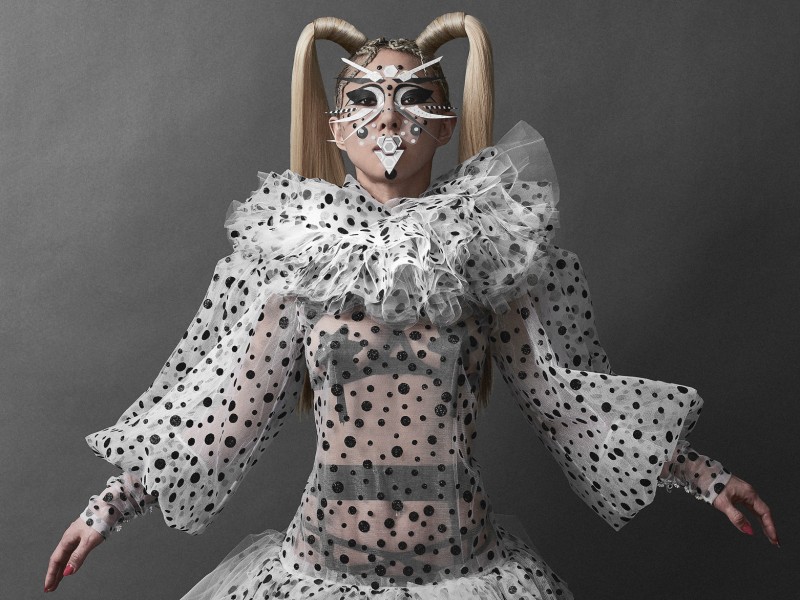It’s 7pm in Osaka, Japan, and Professor Hiroshi Ishiguro looks in need of a nightcap. Hyperactive to the point of distraction, he zips around his apartment seemingly wired on life. One minute, the esteemed roboticist is pacing the living room floor in search of wisdom. The next, he is nervously pulling a blind up and down, peering out of a window into a void of pitch-black infinity. The man can’t settle.
“I don’t have a life outside work,” he muses, “all the time working”. In the course of our conversation he has barely sat down once and clearly finds it difficult to relax. This nervous disposition is less about uncertainty and more about obsession—not OCD, but the behaviour of someone whose primary instinct is to be understood. The erratic moves and repetitive gestures are out of the ordinary to say the least; but then again, there is nothing ordinary about this man.
Some things I know about Hiroshi Ishiguro: He drives a black Porsche (very fast, by all accounts), listens to eighties metal rockers the Scorpions, and, like many of his countrymen, is fond of the odd whiskey. He is also supremely intelligent, as one might expect from the mind behind one of the 21st century’s greatest innovations. Ishiguro, a kind of Dr Frankenstein for the android generation, is the creator of robots so realistic, so lifelike in their rendering, that humans react to them in a way which is altering our perceptions of what they are capable of. His unique work tells us about our relationship to non-human entities, how robots and humans can stand side by side.
“I want to understand what a human is. I’m very curious about how the mind works. My reasons are different to, say, neuroscience. My approach is to focus on intelligence and consciousness and emotions. To understand cognitive function I created a very human-like robot, and if we sense intelligence from the robot we may understand something about how the human functions.”
Ishiguro’s research facility—ATR—is a unique and compelling environment. Over the past two decades, he has constructed a series of doppelgänger androids which have increased in sophistication as technology has improved. His first notable breakthrough was achieved when he replicated his then-four-year-old daughter, although he is most famous for building his own likeness, the vaguely disturbing Geminoid™ HI-1, a robot so physically similar to the man it is moulded on it is uncanny.
Many of those who come into contact with Ishiguro’s family of replicants find the uncanniness alarming. Hence the concept of the ‘uncanny valley’, when humanoid objects which resemble real human beings promote feelings of eeriness and revulsion in observers. But there is method in his madness. The automatons he has so brilliantly engineered are not a digital freak show, but important tools invented for the greater good of society. They appear to elicit feelings of joy from those with dementia, and can deliver lectures at universities, in fact the professor thinks that one day humans and robots will be indistinguishable.
“Look at handicapped people with prosthetics,” he says with authority. “Having a fully functioning body is not a requirement to be a human being. We can define human without talking about flesh and bodies. Even if we use totally mechanical bodies we can still be human, so the boundaries between a robot and humans is going to be very ambiguous. These boundaries are going to easily disappear.”
He claims his robots promote the Japanese concept of Sonzai-Kan, the feeling of being in the presence of another human being. “Have you ever touched an android robot? Once you touch the android you are going to feel a very human-like presence. This is Sonzai-Kan. My robots are totally different from all the other mechanical-looking robots and androids out there. We can make a very strong human likeness from the appearance and movement. I want Sonzai-Kan from being in the presence of my robots.”
He denies it, but within the field of robotics this intriguing figure has attained a kind of rock star status. He certainly looks the part. With his allblack attire and hexagonal spectacles, he might once have played keyboards in Nippon-Wave synth band, the Yellow Magic Orchestra. And the hair! Beatleesque in style and shade, it crowns an angular face that is part cartoon villain, part key-holder to world order. Tending to his locks with considered regularity, nimble fingers draw his black fringe away from his forehead, creating a look that owes more to Lennon than Yoko. “In Japan I’m just a normal—well, maybe not normal—person,” he puffs. “I’m known for being a researcher but not a rock star. Rock‘n’roll is not Japanese culture, it’s American culture.”
He might deflect this public perception as nonsense, but Ishiguro knows the importance of self-promotion. “My research is not science, but it’s important to advertise my activities. What I’m doing is robotics, right? Robots need to be used in society if we are to accept the robot, otherwise I cannot create a robot society in the future. I need to do two things—understanding people and understanding new technologies. This is the difference from pure science.”
And which is the easier to understand?
“Well, robots can be much better partners for the people. I mean, we can trust a robot.”
The way Ishiguro talks about his craft, if one calls the complexity and vision of his research pure craft, is alarmingly deep. Not only does he believe in the concept of the ‘ghost in the machine’, he thinks that robots, for all intents and purposes, have souls too. “We have very different ideas here in Japan,” he reasons. “We believe that everything—bottles, desks, chairs—everything has a soul. What you have to remember is that Japan is a non-hierarchical society. We are very homogenous here and are more about big families, and in the family we never distinguish between family members and pet cats and dogs. Everything equally has a soul, that is the idea.”
Ishiguro is a ponderous soul who forges a link between robotics and its nexus to philosophy and art. He emphasises more than once this evening that his prime motivating instinct is to know what it means to be human. “In the future, we may have a robot society,” he says. “That in itself is a kind of philosophy, because the robot is there to reflect humanity. Everyone will have a chance to think about what it is to be human.”
On a fundamental level, is this a futurist’s take on Descartes’ ‘I think therefore I am’? Might a robot be able to look at life like this at some point? “That is more my goal. I strongly hope to have that kind of self-recognisable robot. I like those ideas but I’m not working on this yet because it’s not so easy. We are starting from more basic ideas, but this concept is our primary goal.”
Related Features
-
56
-
-
-

